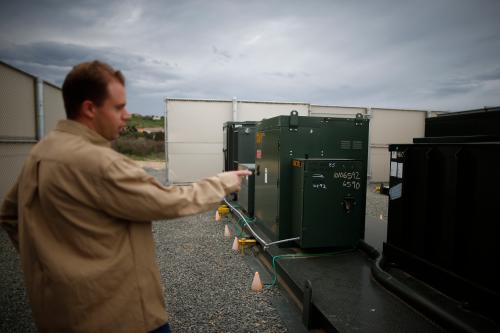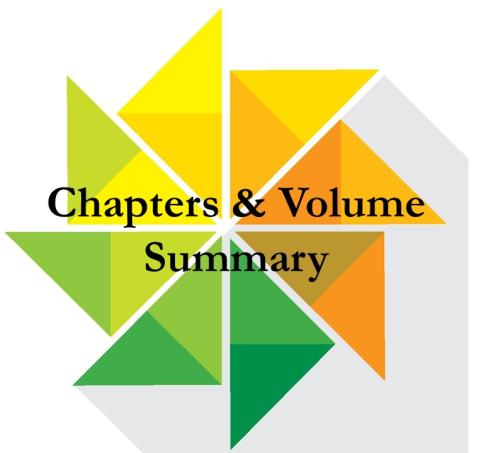The past few years have brought good news for wind and solar electricity generation, especially in terms of declining costs and deployment of more and more capacity, but skepticism remains about renewable energy, perhaps driven by insufficient awareness of what’s actually happening in electricity markets.
There is no question that deploying higher percentages of wind and solar generation poses challenges for the electricity system. But addressing these challenges is feasible: solutions are being implemented to accommodate clean renewable electricity at a reasonable cost and without threatening the stability of the grid. Many groups have been documenting this experience, such as the National Renewable Energy Laboratory, the International Energy Agency, the Regulatory Assistance Project, America’s Power Plan, and the Lawrence Berkeley National Laboratory among others. But perhaps more importantly, customers–from households to large corporations–are demanding cleaner sources of energy, and system operators and many electric utilities are meeting this demand.
Giving customers what they want: Corporate America and the electricity industry embrace renewables
System operators are integrating higher percentages of renewable electricity generation, with several organized markets across the United States experiencing record levels of wind energy production. In February of this year, the Electric Reliability Council of Texas (ERCOT) achieved 45 percent wind penetration on its grid, and the Midcontinent Independent System Operator (MISO) reached a record 13,084 megawatts (MW) from wind. In one recent survey of utility executives, nearly 70 percent identified utility scale renewables as the technology in which they are most invested, and in 2014, renewable energy accounted for at least 20 percent of total retail electricity sales for four major utilities: Xcel Energy, Pacific Gas & Electric, Sempra Energy, and Edison International. The Edison Electric Institute (EEI), representing the nation’s investor-owned utilities, emphasizes clean energy as one of the industry’s three strategic initiatives (the others being grid modernization and customer engagement).
Wall Street is also bullish on clean energy. In April 2014, Citigroup declared that the “age of renewables is beginning,” and Bank of America, Goldman Sachs and others have all announced multi-year, multi-billion dollar investments in clean energy technology.
One of the more interesting trends emerging in the past several years is large corporations demanding renewable energy to power their businesses. In 2015, corporate customers such as Google, General Motors, Philips, Dow, Apple, Facebook, Owens Corning, Kaiser Permanente, and Procter & Gamble purchased 3.2 gigawatts (GW) of renewable energy.
“Utility scale solar can really address the needs of the Clean Power Plan and other objectives we have.” – Nick Akins, CEO, AEP
A recent report stated that nearly half of Fortune 500 companies, and 60 percent of Fortune 100 companies have “aggressive” clean energy goals. Recently, EEI joined World Resources Institute and the World Wildlife Fund to create a partnership– the Utility-Corporate Buyer Collaborative Forum–to further facilitate how utilities can meet corporate demand for renewable energy. Utilities such as Duke, Dominion, NV Energy, PSEG and others are beginning to respond specifically to this demand, developing shared solar, green tariff, and utility services and procurement products.
“If you want to play in the future, you’ve got to be part of the solar industry.” – Ken Zagzebski, President, AES
Implementing solutions to support high levels of renewable electricity
Skepticism of renewables revolves around a view that wind and solar are too expensive and too variable, pose technical integration problems, threaten the reliability of the grid, and that addressing these concerns is costly. As noted, this perspective is based in part on how wind and solar are different than convention fuels–especially in how they interact with the grid–but it is also plainly true that solutions do exist to accommodate these resources on the grid and in electricity markets because it is clearly happening today.
Capital costs and policy support
There is a general perception that renewables are too expensive–driven by high up-front capital costs–and require subsidies and other policy support that raise prices for consumers. While some renewable technologies remain expensive, such as offshore wind or concentrated solar thermal, the costs of onshore wind and solar PV technology have declined dramatically in recent years, making these renewable technologies increasingly competitive.
Lazard’s most recent assessment of the levelized cost of electricity (LCOE) for various generation technologies indicates that onshore wind and utility scale solar PV–unsubsidized–are cost competitive with natural gas combined cycle and coal-fired power plants and cheaper to build than nuclear generation. Recent data from Bloomberg New Energy Finance (BNEF) also indicates that in some regions in the United States, wind PPA prices are below on-peak wholesale prices: In 2015, average wind PPA prices were $19-35/MWh in Kansas, Oklahoma, Texas, and Nebraska (although higher in New England). Wind PPAs in Texas–unsubsidized–are at an LCOE of around $50/MWh. In a nutshell, these prices are very competitive.
At its annual summit in April, Bloomberg New Energy Finance estimated that globally wind costs have fallen 50 percent since 2009, and solar PV module costs have fallen 80 percent since 2008.
Have policy supports for renewables increased prices for consumers? The most recent assessment by the Lawrence Berkeley National Laboratory (LBNL) of renewable portfolio standards (RPS) implemented by 29 states and the District of Columbia reveals that RPS compliance costs were only 1.3 percent of average household bills in 2014.
Some also assert that direct policy support for renewables, especially subsidies such as the federal production tax credit (PTC) for wind of 2.3 cents per kWh, represents a market-distortion. This type of criticism overlooks the fact that there are all sorts of non-market transactions, or interventions, in energy markets for specific technologies, not to mention market failures that policy tries to correct. Indeed, the PTC may be a subsidy, but you could argue that it represents about the added cost to account for carbon externalities if applied to the electricity produced by a coal-fired plant that the wind generator displaces. And right now, that coal plant is effectively getting a subsidy by allowing it to emit carbon into the atmosphere.
A more relevant, constructive and certainly legitimate critique is to re-assess the most efficient policy approaches in light of de-carbonization goals, the level of a technology’s commercialization, and other factors. The current debate over whether and how to address the declining competitiveness of some nuclear power plants reflects this broader issue, and the New York Public Service Commission’s recent recommendation that several nuclear plants receive a credit based on the social cost of carbon indicates one specific approach as part of this discussion.
Variability and intermittency
It is often claimed that variable renewable energy (RE) resources are unreliable: The wind doesn’t always blow and sun doesn’t always shine (variability), and the weather is difficult to forecast with enough accuracy to ensure reliability of the system (intermittency). This is perhaps the most common critical refrain concerning renewable electricity generation.
What is actually happening in markets illustrates that variability and intermittency are manageable and much less of a problem than imagined. System operators can’t control RE generators, but rather accommodate them through a suite of tools and approaches that provide system flexibility. In short, flexibility is the new paradigm for electricity systems, and this flexibility is being achieved in a variety of ways:
- Fast markets: The cheapest approaches involve adapting market rules to accommodate renewables. Simply stated, these tools, such as sub-hourly scheduling and dispatch, allow markets to adapt more rapidly and closer to real time to changing wind and solar conditions. For example, ERCOT and MISO have five minute, real-time energy markets. These “faster” markets are more efficient and reliable, and reduce reserves needed to balance the system.
- Expanded grid operating areas: Larger operating areas allow grid operators to access a wider array of resources, thus mitigating variability, ensuring reliability, and lowering costs. For example, the Western Energy Imbalance Market (EIM) was launched on November 1, 2014, with the goal to connect disparate balancing authorities across California, Oregon, Nevada, Washington, Utah, Idaho, and Wyoming. In fact, one of the reasons this occurred is because of the recognition that having a larger grid operating area is essential as the amount of renewable energy resources continues to grow. The California Independent System Operator (CAISO) just released its quarterly assessment of the EIM, quantifying benefits of $64.6 million since its inception. These benefits are related to more efficient dispatch, reduced renewable energy curtailment, and reduced flexibility reserves needed.
- Improved forecasting: Wind forecasting capabilities have greatly improved in recent years helping to address intermittency. Experience reveals that wind is far more predictable than previously thought within typical dispatch times, and that most of the major ISO markets in the United States are dispatching wind based on wind levels 10 minutes before real time “with an accuracy comparable to that of load and conventional generators.” Xcel Energy has been working with the National Center for Atmospheric Research since 2009 to develop state of the art weather forecasting models. Xcel estimates that by 2014 these models saved the utility’s customers $40 million largely in “fuel savings due to more efficient system dispatch.”
- Flexible demand: Another way to provide flexibility to accommodate RE is implementing approaches that allow demand to be managed. Demand response (DR) programs can participate in capacity and ancillary service markets, and help load balancing during large supply losses. For example, more than 10,000 MW of DR resources were procured in the most recent PJM capacity market auction for the 2019/2020 delivery year.
- Flexible generation: Increasing the amount of variable renewable electricity generation requires the existing conventional fleet of dispatchable generators to cycle more, i.e., ramp up and ramp down, to accommodate RE. While nuclear, coal, and some (non-peaking) natural gas units have not typically been designed to cycle in this manner, raising concerns over increasing wear and tear and added maintenance costs, there are approaches to increase the flexibility of conventional generators. NREL worked with a coal-fired facility in the U.S. demonstrating the ability to load follow, run at minimum generation levels, and start-up and shut-down in the same day, accomplished with a variety of operational changes. Xcel Energy in Colorado has implemented similar changes for its natural gas plants, and nuclear plants in some circumstances are also capable of flexible operation: Jim Conca recently wrote about Germany’s 1,400 MW Grohnde reactor that, although typically used as baseload, is now running 600 hours per month to regulate load. Finally, while using conventional generators as flexible resources does add cost, evidence to date suggests that these costs are far outweighed by the savings in fuel costs as coal and natural gas fired units run fewer hours. NREL estimated that with up to 33 percent penetration of wind and solar in the western U.S. grid, cycling costs would increase $35 to $157 million annually (or $0.47 to $1.28/MWh), but would save $7 billion in annual fuel costs.
- Storage: Storage provides flexibility through load shifting (using excess renewable production for later peak periods), balancing (reducing net load ramps), and participating in ancillary services markets (addressing frequency and regulation needs). Skeptics of the role that renewables can play, and the amount that can be deployed, often base their view on two assertions: that RE needs storage to work, and that storage is too costly and will remain so for the foreseeable future. First, storage is but one tool to provide flexibility, as shown above, and second, while cost is still a challenge for storage, there is strong evidence that costs are coming down, deployment is increasing, and there is more and more policy and regulatory support emerging to promote storage.The U.S. Energy Information Administration (EIA) reports that non-hydro storage capacity in the United States doubled in the period 2010-2015, and BNEF’s New Energy Outlook 2016 projects battery costs to decline 60 percent by 2030. Greentech Media’s most recent storage market assessment reports that 20 states and four regional markets have storage policies. Programs and policies are also emerging at the federal level exemplified by a recently announced White House initiative to promote storage, and the Senate’s draft energy legislation (S. 2012) proposing $50 million annually from FY2017 to FY2026 for DOE to carry out storage R&D (although it remains to be seen if this legislation will move forward).
In a recent survey of U.S. utility executives, 65 percent ranked energy storage as the technology in which they should invest more.
Utilities are actively responding to these trends. In late 2014, Southern California Edison awarded contracts for 260 MW of storage as part of a procurement to replace the retirement of the San Onofre nuclear station and several large natural gas generation units, and Oncor, the largest transmission and distribution company in Texas, announced plans to invest over $5 billion in storage.
Integration costs
Many critiques of renewables not only highlight their high up-front capital costs, but also the cost of integrating them, which many warn are not factored into overall costs. The IEA neatly summarizes three categories of integration costs: network (transmission interconnection); balancing (increased need for ancillary services); and capacity adequacy (backup generation capacity).
Experience thus far, however, indicates that RE integration costs are modest and manageable. NREL’s assessment of a number of studies concludes that integration costs are between $5 to $12/MWh (and frequently below $5/MWh) for wind capacity levels up to 40 percent of peak load.
Moreover, it’s worth highlighting two facts about electricity system operation, as articulated by NREL: Greater penetration of RE does require more flexibility, i.e., more responsive conventional generation and responsive load, but does not increase overall capacity requirements; and second, all generators impose costs when added to a power system, but they are “seldom calculated as integration costs and never applied to conventional generators as integration costs.”
Technical integration
RE resources pose technical integration challenges: Since they are not synchronous generation–there is no direct electro-mechanical link to the grid–they are incapable of providing some typical ancillary services, such as stabilizing inertia (helping maintain frequency) and reactive power (helping maintain voltage levels). Nevertheless, approaches are being implemented to make ancillary service markets and the renewable energy generators themselves more flexible. ERCOT is working on developing a new ancillary service to better address frequency response (its Fast Frequency Response product), and CAISO is proposing a Flexible Ramping Product to secure up-ramping and down-ramping resources in both the day-ahead and real-time markets. Markets and utilities also are increasingly allowing or requiring RE to participate in ancillary service markets. While there are differences in implementation rules across system operators, PJM, MISO, ERCOT, NYISO, and ISO-NE allow wind to participate in ancillary service markets, providing such services as frequency response and voltage regulation.
Capacity factor and baseload capacity
Another critique of RE is that variability means they run fewer hours and produce less of their rated capacity compared to conventional, dispatchable resources, and are unable to provide baseload capacity. The reality is that capacity factors for renewables have been improving dramatically. BNEF estimates an average capacity factor for onshore wind in the United States of 37 percent for the second half of 2015, with capacity factors in Texas over 50 percent. LBNL research reports an average capacity factor of 27 percent for utility-scale solar (including both PV and CSP projects), with some individual installations reaching 35 percent. Meanwhile, the U.S. EIA estimates that the average capacity factors in 2015 for gas combined cycle plants and coal steam plants were both around 55 percent (for nuclear, capacity factor is around 90 percent).
“The idea of baseload power is already outdated.” – Steve Holliday, CEO of National Grid
Baseload is an economic concept in transition. For over a century the power sector has been structured around using controllable generation technologies to meet variable demand. However, the fundamental challenge going forward is to think about electricity systems differently: As more and more variable generation is deployed, the new paradigm for electricity markets is flexibility. As experts at America’s Power Plan aptly state: “In previous decades, grid operators looked at demand as an independent variable, and dispatched supply to meet it. Now, supply is more variable and demand is more controllable.” This reality is reflected more and more in the views of utilities. Steve Holliday, the CEO of National Grid summarized:
“An extraordinary amount of capital was tied up for an unusual set of circumstances: to ensure supply at any moment. This is now turned on its head. The future will be much more driven by availability of supply: by demand side response and management which will enable the market to balance price of supply and of demand. It’s how we balance these things that will determine the future shape of our business.”
Transmission
Renewable energy resources are often located far from demand, requiring expensive and difficult to site transmission infrastructure. There is no question that building new transmission is difficult: It often takes up to 10 years in the United States and other locations, owing to regulatory review, permitting and siting requirements, property and eminent domain disputes, and not-in-my-backyard sentiment across multiple jurisdictions. Nevertheless, there are recent examples of successful approaches to addressing the transmission challenge, including innovative planning and cost allocation methodologies. The CEO of the Southwest Power Pool credited the Highway-Byway Cost Allocation process with allowing that market to deliver higher levels of wind generation. In 2008, the Texas Public Utilities Commission authorized the creation of five “competitive renewable energy zones” (CREZ), designating wind rich areas in the western part of the state and authorizing transmission expansion and new construction to bring the electricity to demand centers in the east. A recent report from the University of Minnesota documented how 11 utilities across Minnesota, Wisconsin, North Dakota, and South Dakota collaborated and worked with local stakeholders to “plan, develop, and build $2.1 billion worth of new high-voltage transmission lines spanning nearly 800 miles.”
Competitive Renewable Energy Zones in Texas are credited with facilitating the addition of 3,500 miles of transmission lines and reducing curtailments of wind generation from 17 percent of total wind production in 2009 to 0.5 percent in 2014.
While estimates of transmission-related costs to accommodate higher levels of renewable energy penetration vary, they are generally a small percentage of total costs. For example, NREL examined a variety of scenarios of wind penetration by 2024 in the Eastern Interconnect of the United States and found incremental transmission costs to be less than 10 percent of total system costs up to 30 percent wind penetration.
Large-scale renewables are a growing part of the generation mix
Adding a significant amount of renewable energy does indeed challenge the way electricity systems have been structured and operated for over a century. But cost-effective solutions exist, and high levels of renewable energy in the electricity mix are possible, presenting more of an economic challenge than technical one. NREL’s assessment of numerous grid integration studies concludes that deployment of RE of “at least 30 percent is achieved by implementing largely well-understood changes to system operations along with transmission capacity expansion,” and its Renewable Electricity Futures Study showed relatively small rate increases over next 40 years with 80 percent renewable energy in 2050. And it’s not just a variety of studies championing RE: electric companies and system operators are integrating more and more of these resources each year. In fact, electric utility companies are responsible for virtually all of the wind energy in the United States and about 60 percent of the solar energy deployed is owned by electric utilities.
Thus, it is no longer a question of whether deploying and integrating large-scale renewables is possible. Rather, the key questions going forward are: working out the most effective and efficient policies to incentivize as many low carbon resources as possible, and; integrating distributed energy resources–specifically, “understanding the complete value chain for all parties…and getting the pricing right.”
Renewables are not the only answer to the energy-climate challenge, but we need every low carbon MWh available, and skeptics should at least recognize what corporate America, Wall Street, system operators, a growing number of utilities, and more and more households already do–that innovations in policy, technology, and market operations are taking place in real-time allowing the integration of higher levels of clean renewable energy while maintaining reliability and affordability.
The Brookings Institution is committed to quality, independence, and impact.
We are supported by a diverse array of funders. In line with our values and policies, each Brookings publication represents the sole views of its author(s).










Commentary
Op-edRenewables get the job done despite skepticism
August 11, 2016